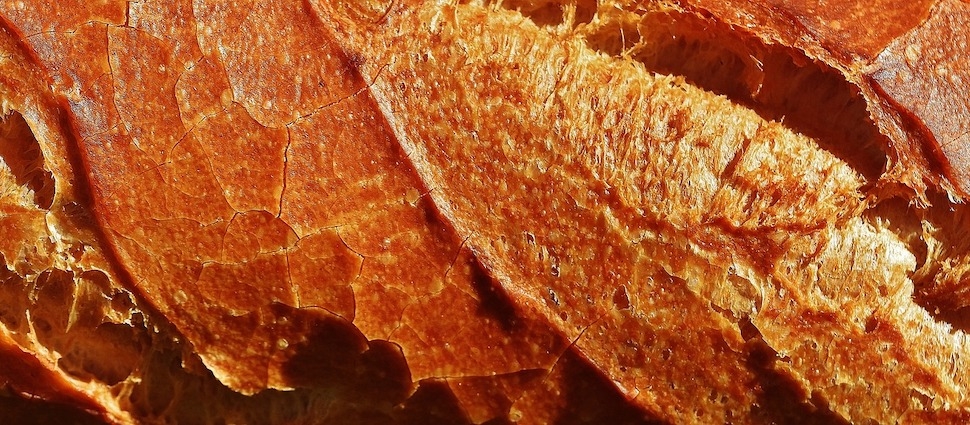Berengarius of Tours and the Dispute on the Lord’s Supper

Berengarius of Tours and the Dispute on the Lord’s Supper
When Berengarius of Tours expressed his disagreement with the teachings of Lanfranc of Bec regarding the Lord’s Supper, he might have meant to continue the peaceful discussion that had begun in the ninth century between Paschasius Radbertus and Ratramnus of Corbie.[1]
Like Radbertus, Lanfranc defended the belief that, when the priest consecrates the host and the wine, those elements miraculously turn into the actual body and blood of Christ. Berengarius, lke Ratramnus, affirmed that the bread and wine are a sign, or similitude, of the body and blood of Christ.
A Daring Declaration
Berengarius was born to a wealthy family in Tours, in today’s France, at the start of the 11th century. After completing his basic education, he went on to study under the famous Fulbert, bishop of Chartres. He was later ordained archdeacon of Angers, although he continued to live and teach in Tours.
His discussion with Lanfranc started in 1047. It had many similarities with the discussion between Radbertus and Ratramnus. But the times had changed, and his opponents reported to Rome that Berengarius was denying the true presence of Christ in the sacrament. Actually, like Ratramnus before him, Berengarius didn’t deny the mystery of that presence. But he firmly stated that the elements don’t change in their substance,
In 1050, pope Leo IX condemned Berengarius and summoned him to attend a council in Vercelli, in northwest Italy, where his sentence was to be pronounced. But Berengarius could not attend because King Henry I of France, for unclear reasons, had locked him in prison.
With the help of friends, Berengarius paid his way out of prison and found refuge at the court of Geoffrey Martel, Count of Anjou. He was then condemned by default in Vercelli. This was just the first of many condemnations.
The following year, King Henry called a council in Paris to express a similar sentence against Berengarius and one of his disciples, Eusebius Bruno, bishop of Angiers. The two men didn’t attend the council, and were again condemned by default.
In 1059, Berengarius was summoned before another council, this time in Rome. By then, Geoffrey Martel had stopped supporting him, and other sponsors and friends were leaving him. When the council declared that, after the consecration, the bread and wine are “the true Body and Blood of our Lord Jesus Christ and that they are sensibly, not only in sacrament but in truth, touched and broken by the hands of priests and ground by the teeth of the faithful,”[2] Berengarius prostrated himself to the ground in silence – a gesture that was interpreted as submission.
The council’s formulation, however, was generic enough to leave room for Berengarius’s more spiritual interpretation of the sacrament. In any case, he continued to teach as before. In fact, this is probably when he wrote his book, De sacra coena (Of the Sacred Supper), against Lanfranc and the council. When Lanfranc published a rebuttal, Berengarius wrote a new confutation.
The church continued to issue condemnations of Berengarius. At one council, in Potiers, the fervor against him was so strong that violence had to be repressed.
Another council was held in Rome twenty years later, where Berengarius was forced to recite a much more detailed confession, stating that the bread is the true body of Christ, the same body that was born of the Virgin, hung on the cross, and sits at the right hand of the Father; and that the wine is “the true blood of Christ which flowed from his side; not only through the sign and power of the sacrament but in his proper nature and true substance.”[3]
Berengarius appealed to Pope Alexander II, but any discussion between the two ended when Berengarius declared he could not change his stand. He finally retired on the island of Saint-Cosme near Tours, keeping silence about a subject that seemed to have lost all supporters. He died there on January 6, 1088.
Berengarius’s Legacy
At first, it seemed that Radbert and Lanfranc won the debate, as the Roman Catholic Church officially adopted their teachings at the Fourth Lateran Council of 1215, which declared: “There is indeed one universal church of the faithful, outside of which nobody at all is saved, in which Jesus Christ is both priest and sacrifice. His body and blood are truly contained in the sacrament of the altar under the forms of bread and wine, the bread and wine having been changed in substance, by God's power, into his body and blood, so that in order to achieve this mystery of unity we receive from God what he received from us.”[4]
According to Leonardo De Chirico, Italian theologian and pastor of the Baptist church “Breccia di Roma,” this is a consequence of the church’s progressive insistence on its institution as “mediator” of grace and its progressive perception of Christ as “too distant to be accessible to our daily lives.” The stronger this perception, he said, “the more the visible church inflates a plethora of devotions to saints and to Mary, relics, and sacraments, which become real, reified presences of grace.”[5]
In any case, Berengarius’s De sacra coena was preserved at least in part in successive copies, which ended up influencing Reformed writers of the 16th century. The Roman Catholic Church, on the other hand, placed the book on its list of forbidden texts from 1559 to 1900.
[1] See Simonetta Carr, “Ratramnus of Corbie and His Book on the Lord’s Supper,” Cloud of Witnesses, Place for Truth, Aug 28, 2018, https://www.placefortruth.org/blog/ratramnus-corbie-and-his-book-lord%E2...
[2] Lawrence Feingold, The Eucharist: Mystery of Presence, Sacrifice, and Communion, Emmaus Academic, 2018, 286
[3] 287
[4] Decrees of the Fourth Lateran Council, §1 Confession of Faith, https://pages.uoregon.edu/dluebke/Witches442/FourthLateran1215.html#:~:t....
[5] Leonardo De Chirico, “Letture medievali (VI-XI secolo)”, Studi di teologia, Year 34/1 N. 67, Ist Semester 2022, 2.1, my translation.





